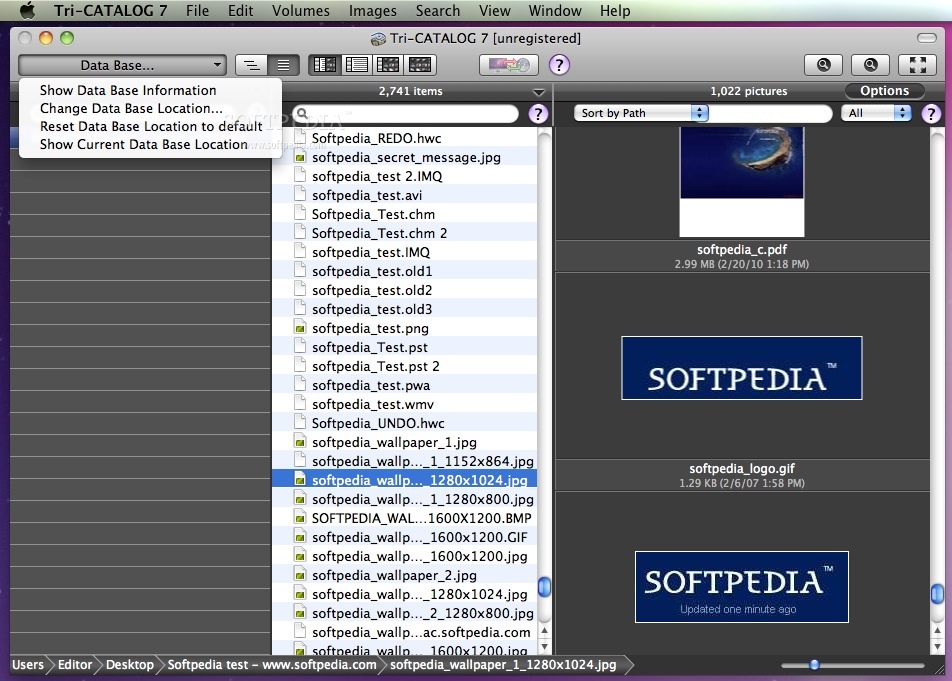

#Tri catalog free
The recipient will just need to have a version of Tri-CATALOG 7 (including the free version "Free Reader"), and copy the "virtual volume" in its local database to view the images and content of the volume you send. Share volumes by sending "virtual volumes": You can send a "virtual volume" by e-mail, or by copying across a network, a USB key, etc. You can yourself see the "virtual volumes" created by other users, but you can not share these volumes or edit them. This is an easy way to share or send your images to others.

You can share volumes with other users or other machines, so they can see your pictures and photos (as thumbnails) and the list of files contained in the original volume (but they will not access the real pictures and files). The analysis of a disk (or folder) by Tri-CATALOG creates a "virtual volume" in the database: Only images that match the selected criteria are displayed:Ī multi-criteria search is also possible on the entire data base or selected volumes.įor each volume, there is a file "virtual volume" created in the database. Research can be done on the images of a particular volume, using the name as well as file attributes (date, size, etc.) and shooting attributes (exposure, aperture, focal length, sensitivity, etc.) by selecting the desired values in the panel of research. Tri-CATALOG can show you the pictures you want to retrieve, and will tell you where and in what device the original item is saved. If you need to find an image or file, search in the data base on some or all of the volumes saved.
#Tri catalog full
The main window displays a list of all volumes analyzed (left), the contents of the selected volume and images.Īn image can be displayed in large in the browser (with the maximum size of the thumbnail stored in the "virtual volume") or even full screen if the original image is available. You can browse their contents, view images and read the information (file attributes, EXIF and IPTC data of images, etc.). Note: Options are provided to limit the images for which a thumbnail is created and set the thumbnail size.Īll "virtual volumes" that you have created are available at any time, even if the original disk is no longer available. So you can keep all the content you want in your database while using only a limited space. These "virtual volumes" remain accessible at all times, even if the original disk is no longer available. You can create an unlimited number of "virtual volumes". It creates a "virtual volume" containing the list of files and folders in the hierarchical organization, and the views of all the images (as thumbnails). Tri-CATALOG can analyze the content of any volume (disk, partition, CD, DVD, USB key, etc.) or folder. On a small Mac, you can view all of your pictures.

The "virtual volumes" are very light compared to the original volume, but you can see all the images (reduced).

You retain control of the original pictures. They can view your images but with limited resolution. You can send "virtual volumes" to others. With Tri-CATALOG, you can easily share this data with other users and other Macs. Tri-CATALOG was build to save a list of the contents of your folders, local and remote disks, CDs, DVDs, etc., in its database so that you can locate them quickly and easily.įor each folder or disk analyzed, Tri-CATALOG creates a "virtual volume" containing the list of files and folder hierarchy, as well as thumbnails for images. If you spend too much time finding a picture or a file on your hard disk or your CDs, just let Tri-CATALOG analyze them once, and you'll recover them in a wink. (Mac OS X 10.4 and 10.5 : Use Tri-CATALOG 6)Ī very easy way to manage pictures and files


 0 kommentar(er)
0 kommentar(er)
